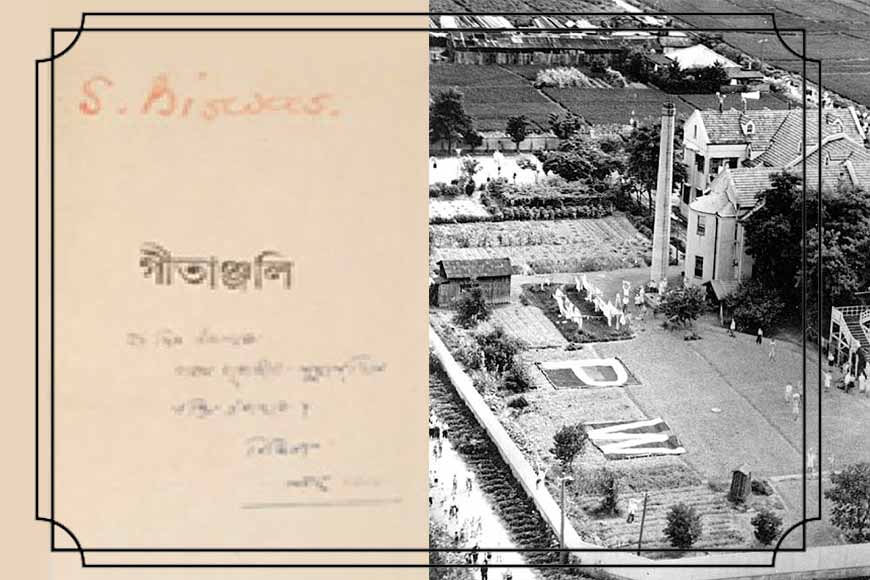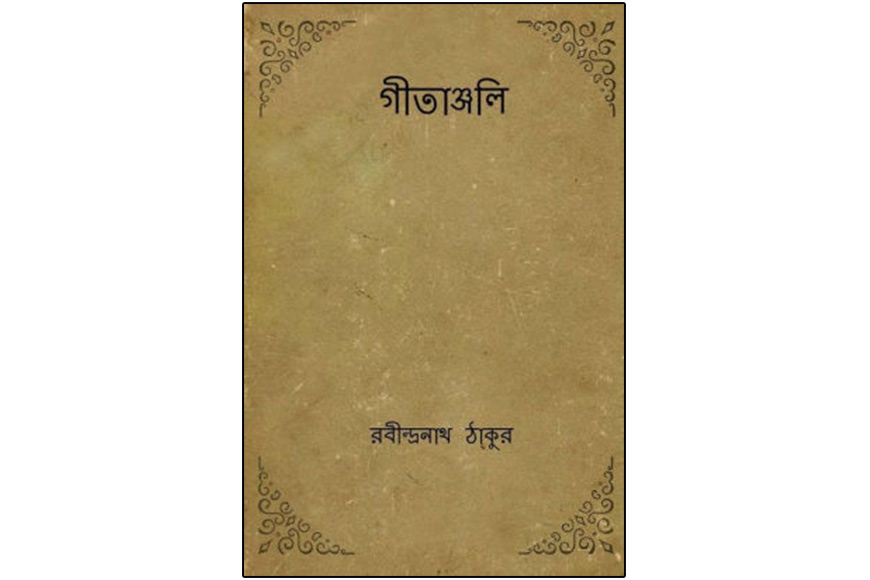Suhasini Biswas’ Gitanjali Diary – The Anne Frank of Bengal

The first page of Suhasini’s Gitanjali Prison Diary (left),The place where Suhasini was interned as a Prisoner of war (right)
Rabindranath Tagore’s Gitanjali, the immortal book that fetched him a Nobel Prize, have helped many of us survive during harrowing times. Interestingly, it had once upon a time helped a traveller from Bengal who was wrongly detained in the Japanese Detention Camp during World War II while on a ship journey. She was taken as the Prisoner of War.
Suhasini Biswas (1895-1970) was born into a Bengali Christian family of Calcutta and graduated from Calcutta’s Diocesan College. Then she dedicated her life as an academician and as a faculty at the Faizunessa Government Girls’ High school in Comilla (now in present Bangladesh) she came in close contact with the Australian Baptist Missionaries. They invited her on an academic mission to Australia. This was a time when World War II was raging and British India was drawn as a part of the war. Despite opposition from her family, Suhasini was brave enough to decide to go to Australia by ship.
The German and Japanese naval warships were then in the Pacific Ocean. The year was 1941. The onward journey was done, mission accomplished. But it was on the return journey that fate was against Suhasini. Aboard the ship SS Nankin in April 1942, the worst fears came true. The ship was attacked by the Germans and was sunk. All the passengers were taken hostage and handed over to the Japanese. Suhasini was sent to Fukushima POW Camp as a ‘British prisoner.’
Suhasini Biswas (1895-1970) was born into a Bengali Christian family of Calcutta and graduated from Calcutta’s Diocesan College. Then she dedicated her life as an academician and as a faculty at the Faizunessa Government Girls’ High school in Comilla (now in present Bangladesh) she came in close contact with the Australian Baptist Missionaries.
Also read : The 19th century French Connection
In almost inhuman conditions she was detained there from July 1942 to September 1945. Just like a diary had helped holocaust victim Anne Frank from getting demoralized, it was Gitanjali that sustained Suhasini. She had successfully smuggled a copy of Tagore’s Gitanjali in Bengali by telling the authorities that it was Bible. This copy of Gitanjali became her prison diary in the margins of which she recorded her personal struggle as a prisoner.
 Gitanjali by Tagore
Gitanjali by Tagore
With a pencil she used to write poignant lines as if virtually talking to Tagore and how his poems and drawings are a source of her sustenance. Shortage of food, inhuman living conditions, little medical attention, brutal punishments, no contact with the outside world, and disease and death around --- Suhasini literally survived through all these just with her Gitanjali Diary.
The Diary opens with the name of the detention camp penciled on the margins of the first song in Gitanjali – Amaar matha noto kore dao hey. She underlined the last two lines of this song ‘Shokolo ohonkar hey amar, dubayo chokhero joley.’ The book somehow prepared her for taking on the challenge of future days and surrendering to God and her fate. On an entry dated 5th June, she writes on the margins: Bipode moure rokkha koro e nohe moro prarthona, bipode ami na jano kori bhoy.
On another page she writes Je paashe eshe basechhila tobu jaagini, ki ghum tore peyechhila hatabhaagini. It was as if God came by her and sat by her, yet she missed the moment. Suhasini kept experiencing God in the silence of the night that kept her alive. There are many more such notes in the pages of Suhasini’s Gitanjali Diary. It was a tale of her determination to survive.
After the war ended, Suhasini returned home and dedicated her life to social work. She was also a teacher at Sakhawat Memorial Girls’ School till 1950. We always speak of Anne Frank’s diary but never about Suhasini’s Gitanjali Diary that was an equal source of inspiration for the dying soul.










